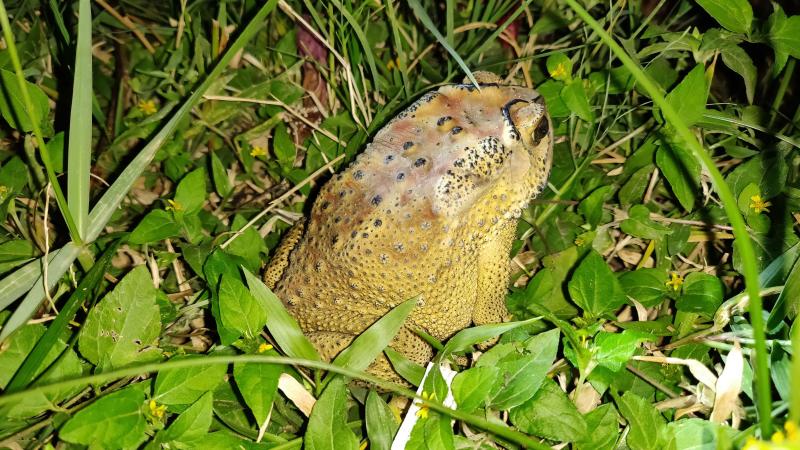
It's the monsoon, and the green hills of the Western Ghats resonate with the croaks of frogs! If you thought the frogs are having a lovely time in the incessant rains, you might be wrong! They could just be fighting a fierce battle that decides their survival. The adversary is not a predator, but a fungus called Batrachochytrium dendrobatidis or Bd for short. These pathogens affect amphibians globally and cause a fatal fungal infection called chytridiomycosis. In a recent study, researchers from the University of Plymouth, UK, George Washington University, USA, Imperial College London, UK, and Tata Institute of Social Sciences, India, have explored the prevalence of Bd in the rocky plateaus of northern Western Ghats.
Chytridiomycosis has resulted in the mortality of frogs around the world and has been linked to their possible extinction. One such classic example is that of the Panamanian golden frog, endemic to Panama, that is known to have become extinct in the wild since 2007. In the Western Ghats, the presence of Bd has been documented since 2011, with the first case of chytridiomycosis reported from the northern Western Ghats in 2013. In this study, published in the Royal Society Open Science journal, the researchers have explored the factors that result in the spread of Bd in an ecosystem that has variations in its connectivity and climate and is now also subjected to effects of agriculture and tourism.
The researchers captured 118 individuals of anurans (tailless amphibians) and apodans (limbless amphibians) belonging to 21 species found in the Deccan Traps at altitudes varying from 67m to 1179m above sea level. They then extracted the DNA of the skin swabs of these individuals to detect the presence of Bd. Since the Western Ghats is a vast ecosystem, the researchers divided the study area into two regions—'low' region with altitudes less than 700m and 'high' region with an altitude higher than 700m above sea level.
The study found that a whopping 79% of the screened individuals tested positive for Bd. It also reports first records of chytridiomycosis infection in the critically endangered Amboli toad (Xanthophryne tigerina), the endangered White-lipped cricket frog (Fejervarya cf. sahyadris) and four species of caecilians—a group of limbless serpentine amphibians.
Dr KV Gururaja, a batrachologist from India, says, “Most of the infections are seen in endemic families compared to families that are widespread. I am more concerned about Micrixalidae, the dancing frog family, which is active in the day and lives near streams. It has shown a higher percentage of infection compared to others. If the disease breaks out in them, they are the first ones to be wiped out from the Western Ghats. My observations of this disease are in common species like Minervarya caperata (Canara cricket frog), Duttaphrynus melanostictus (Asian common toad) and very rarely in Nyctibatrachus (night frogs)."
Interestingly, the researchers found that the fungal infection had a higher prevalence in 'low' regions than in the 'high' regions. The researchers attribute this to the better connectivity in the 'low' regions due to the presence of streams that act as transmission routes. The 'low regions' isolated from human settlements also indicated a higher prevalence of Bd. On the other hand, the physical features of the 'high' regions such as the physical shape of the hills and valleys posed as a barrier stopping the spread of infection. The results also support the possibility of the waterbird Red-wattled lapwing (Vanellus indicus) acting as a vector for the parasite.
Posed by grave threats such as climate change, there is not any glimmer of hope for the survival of amphibian life across the world, including the Western Ghats. Hence, understanding the transmission vectors of the fungus and its management is crucial before they savage the amphibian life in the Western Ghats. “Until there is a better understanding of the mechanisms triggering benign Bd infection to become lethal chytridiomycosis, its presence should be considered in all future conservation policy decisions. A study of the evolutionary history of Bd in the entire WG area would also help with its management. There is an urgency to determine the routes of transmission and triggers for the pathogen to become lethal”, remark the researchers.
The present-day scenario is witnessing an explosion in the number of nature enthusiasts who perhaps know decidedly less about frogs infected by Bd. In Dr Gururaja’s opinion, better field survey techniques are essential for frog watching and handling, as a person might act as a transmitter for the spread of the disease.
What does the future hold for these frogs in the Western Ghats? “We still do not know how many species are there in the Western Ghats. In such a scenario, it is worrisome to get a full picture of what is going to happen. Though it is clear that Bd is native to the Western Ghats, it means we may not have a similar approach to the Bd infections tackled elsewhere. We need to develop our own methods to curtail the spread” signs off Dr Gururaja.





